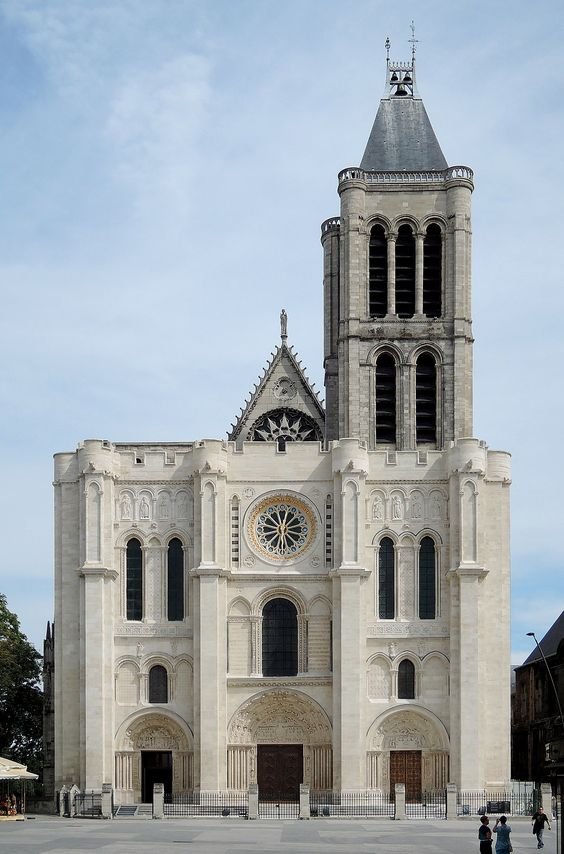The Art of Cathedrals:Architectural greatness

A cathedral is a huge church that serves the purpose of possessing the bishop’s seat and serving ordains for the diocese. Ancient cathedrals are marks of architectural brilliance, as they are considered ‘the place of god’ it was imperative for the society to pay utmost attention to detail when constructing the cathedrals. The pre-revolutionary period of France saw the domination of the catholic church and the clergy over the entire nation, they levied taxes on the working classes and the rulers and knights gifted significant donations to maintain their relations with the church. All these gatherings then went to the construction of massive and glamorous cathedrals which were then regarded as a symbol of strength and unity of an empire. There were various architectural styles revolving in the domain of building cathedrals, they differ by the architect, the time period, etc. The most popular styles were the Gothic architecture style, the Romanesque architecture style and the Renaissance architecture style.

The Gothic architecture style can be seen in cathedrals like the Canterbury Cathedral built by the Normans in Canterbury, Kent, The Milan Cathedral in Milan, the Basilica Cathedral of Saint-Denis, and the Sainte-Chapelle in Paris. The signature style of artists designing Gothic architecture was their pointed arches. Every cathedral constructed with this style of architecture has huge pointed arches which gives it an elegant and dominating look. This style was prevalent in Europe from the late 12th to the 16th century. Elaborate tracery and detailed stained-glass windows were also some of the signature works of Gothic architecture. Some notable names of famous architects who practiced the Gothic style of architecture of cathedrals are Abbot Suger, Antoni Gaudi, Edward Brickell White, etc. This type of architecture was also used to build abbeys, palaces, castles, and guildhalls.

Succeeding this, one can observe that the Romanesque style of architecture evolved during the 11th and 12th centuries in medieval Europe. This style can be seen in cathedrals like the Durham Cathedral and the Ely Cathedral located in England, the Cathedral of Notre-Dame of Tournai, Belgium, the Bamberg Cathedral of Italy, etc. The focus of Romanesque architecture was shed on semi-circular arches unlike that of the pointed ones in the gothic style. The Romanesque architecture style dominated several countries in Europe including France, Germany, Spain, Belgium, and England. Some of the celebrated architects who mastered this style of architecture are Henry Hobson Richardson, Josep Puig i Cadafalch and Norman Barons. It was also well known for its barrel vaults, sturdy pillars, large towers, and decorative arcading.

The next style of architecture called ‘the Renaissance,’ evolved in the late 15th century. It was a rebirth of styles from classic Greek and Roman forms of architecture, focusing on precision and deliberate details, proportion, and symmetry in their style. The Renaissance architecture was looked at as a symbol of harmony due to its precise symmetrical proportions. This style of architecture can be seen in the Cathedral of Florence in Italy, the Santa Maria Dei Miracoli in Venice, Italy, the Biblioteca Marciana, the St. Peter’s Basilica in Rome, etc. One of the very prominent architects of the time, Filippo Brunelleschi, was one of its innovators along with Leon Battista Alberti and Andrea Palladio. This style was famous for its orderly arrangements of columns, Pilasters and lintels and the use of hemispherical domes was replaced with more complex proportional systems.

Medieval cathedrals in Europe from the 12th to the 16th centuries served not only religious but also cultural, social, and political functions. Cathedrals were, for the most part, the centers of Christian faith, the seats of bishops and points of reference for the spiritual lives of communities. They hosted fine liturgical events, e.g. mass and religious festivals, which drew large congregations and developed a sense of a singular religious identity that confirmed the Church as an all-powerful guide of medieval society. Construction of these cathedrals, especially in the Gothic Style, represented the epitome of technological advances and artistic achievements; high vaulted ceilings, large stained glass windows, and intricate sculptures. What were once places of worship now cast their shadows over the urban skyline as symbols of civic pride.

In addition, cathedrals were centres for the arts, commissioning works from renowned artists and craftsmen. Stained glass windows depicting Scriptures brought biblical narratives to a largely illiterate populace, educating them on Christian teachings, sculpture and fresco decorating the walls, combining religious themes with local culture. This patronage was instrumental to the development of the European artist and Renaissance. Furthermore, cathedrals became venues for music and drama, thus placing them firmly in cultural life. Constructing and running cathedrals gave considerable employment to local laborers and artisans and created a regional market economy for them. They became shifting trading centres and stations for pilgrims that spread benefits across Europe.

On the political scale, cathedrals were power symbols; bishops wielded considerable sway, sometimes acting as mediators between the nobility and the populace. A grand cathedral would oftentimes relay the political ideals of a city or region by demonstrating wealth and stability. For example, constructing a cathedral could signify the independence of a bishopric or the growing importance of a town within the feudal system. Additionally, many cathedrals were associated with schools that taught theology and the liberal arts, preserving and disseminating knowledge during a time when literacy was limited. These institutions contributed to the rise of universities in the later Middle Ages, significantly influencing the course of Western education.

In conclusion, cathedrals in medieval Europe were multifaceted institutions of profound significance, serving as religious centres, artistic showcases, economic catalysts, political symbols, and educational hubs. Their enduring legacy continues to shape our understanding of medieval society, illustrating how architecture can encapsulate the complexities of cultural, social, and spiritual life. The cathedrals stand as monumental testaments to the era’s aspirations and achievements, reflecting the intricate web of relationships that defined medieval Europe. All aspects of artistic and spiritual life were inculcated in the essence of the formation of cathedrals in Medieval Europe.


